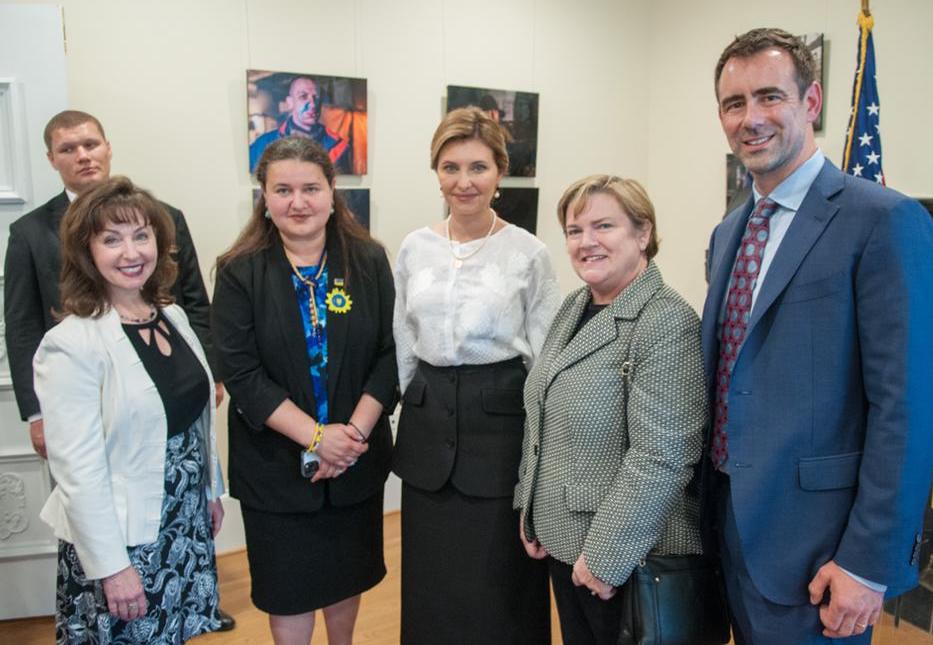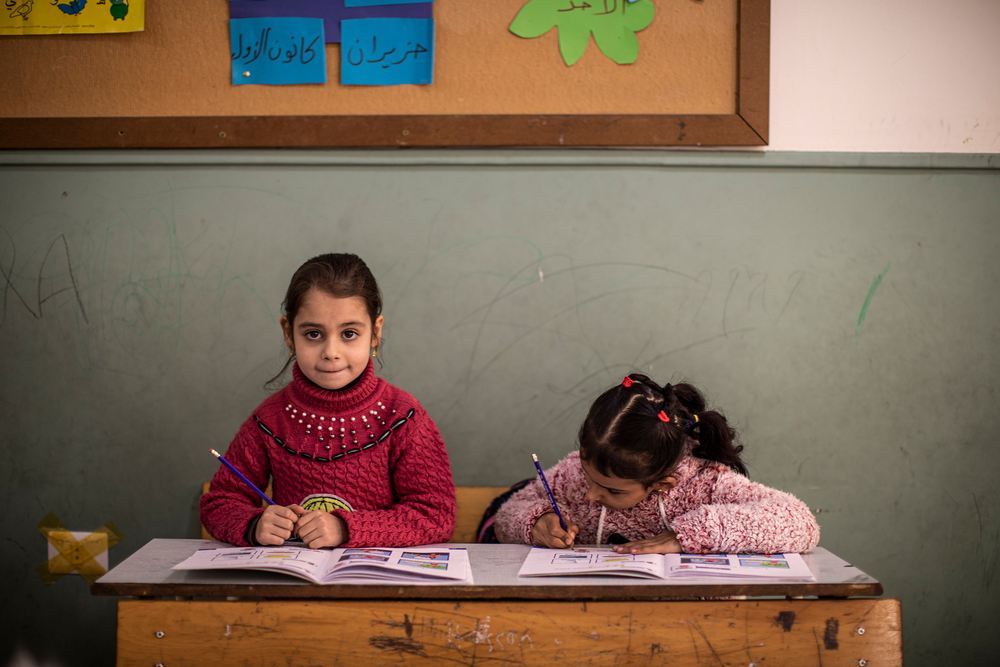
Education under attack: 90 countries pledge to make schools safe for children
Children in conflicts, Education in emergencies, Safe schools
The right to learn free from fear, violence and military occupation was the focus of the third International Safe Schools Conference in Spain.
More countries are taking action to protect children and teachers from attacks on schools. Ninety nations have now signed up to the Safe Schools Declaration – a commitment to safeguard education from violence – and many are clamping down on the military use of schools.
But there were more than 14,000 armed attacks on schools across the world over the past five years and the ongoing conflict in Afghanistan led to the closure of over 1,000 schools by the end of 2018.
These horrifying facts emerged as governments and global organisations gathered at the third International Safe Schools Conference this week in Spain.
Theirworld has been campaigning for several years now for the right of all children to be given a safe, quality education – free from fear of conflict and violence.
Here we look at the issue of attacks on education, the International Safe Schools Conference and what’s being done to make learning safer for children.
What is meant by safe schools?
Every child in the world should have access to safe, quality and inclusive education. But over 500 million school-age children and adolescents live in countries where schools face threats. Theirworld’s report Safe Schools: The Hidden Crisis projects that without urgent action that will rise by 2030 to over 620 million young people – almost one in three.
What threats do schoolchildren face?
Theirworld’s report listed three major types:
- Environmental threats including natural disasters, such as floods and earthquakes, as well as public health threats and disease outbreaks.
- Internal threats that take place inside schools and include recruitment by violent or extremist groups, gang activity and gender-based violence.
- External threats outside the school that still impact children’s education – including attacks on the way to or from school, attacks on schools and the occupation of schools by armed groups.

Attacks on schools and the occupation of schools by military or armed groups are covered by the Safe Schools Declaration.
What is that?
The declaration is a public commitment by countries to protect education from attack and to stop the occupation of schools for military purposes.
It was launched four years ago with the backing of 37 countries. It now has 90 nations signed up – at the conference this week Nicaragua this week became the latest country to add its name, following the additions of Guatemala and The Gambia.
Here is a full list of countries that have signed the Safe Schools Declaration.
90 countries and counting! Congrats to #Nicaragua.
There’s still time for other states to endorse the #SafeSchoolsDeclaration at #PalmaConference!
Who’s next? pic.twitter.com/3kEWhEP85S
— GCPEA Secretariat (@GCPEAtweets) May 28, 2019
So what is the International Safe Schools Conference?
The first one was held in Oslo in 2015 and featured the launch of the declaration. Argentina hosted the second conference last year and the third was held on May 28 and 29 in the Spanish city of Palma. It was hosted by the governments of Spain, Argentina and Norway, along with the Global Coalition to Protect Education from Attack (GCPEA).
The conference brought together about 300 representatives of governments, United Nations agencies and international organisations. They discussed ways to build on the progress that has been made in protecting students, teachers and education staff who face dangers in armed conflict.
What was the background to this year’s conference?
Several international organisations released new research on the eve of – or at – the conference in Palma de Mallorca.
They included research on attacks in schools in Afghanistan and Yemen, and a look at what countries are doing to stop the military occupation of schools.
GCPEA released updated data which showed that over the past five years there were over 14,000 armed attacks on education in 34 conflict-affected countries that suffer these attacks systematically.
Among these were about 10,000 attacks on schools, where buildings were bombed, damaged or used by armed forces or groups. Nine countries each suffered more than 500 attacks on schools.
What’s happening in Afghanistan and Yemen?
UNICEF revealed that attacks on schools in Afghanistan tripled between 2017 and 2018 – up from 68 to 192. It was the first time in three years that school attacks had increased and led to more than 1,000 schools being closed by the end of 2018 and 500,000 children denied their right to education.
“Education is under fire in Afghanistan,” said UNICEF Executive Director Henrietta Fore. “The senseless attacks on schools; the killing, injury and abduction of teachers; and the threats against education are destroying the hopes and dreams of an entire generation of children.”
At the conference Afghanistan revealed that 300 of the schools have now reopened and committed to having every school up and running as soon as possible.
The Norwegian Refugee Council called for an end to the practice of using schools in Afghanistan for election voter registration and polling centres.
“Concrete steps are required across all government ministries to enshrine the safety and civilian nature of schools and to take steps to reduce attacks by avoiding military and political use of school buildings,” said NRC’s Advocacy Manager in Afghanistan.
In Yemen, the five-year conflict has left over 2,000 schools not being used due to damage or occupation by armed groups – and more than two million children out of school.
War Child’s new report Being Kept Behind showed some children are so unable to cope with the stress of war they’ve developed dependencies on substances including tobacco and the drug khat. Many are exhibiting behaviours associated with mental health conditions.
The charity’s director for Yemen, Mona Saleh, said “children are having their futures stolen by being denied access to education”.
What’s the picture for military use of schools?
Human Rights Watch produced a 137-page report called Protecting Schools from Military Use: Law, Policy, and Military Doctrine. It showed examples from 50 countries – including some currently hit by conflicts – where legal and other measures are being used to protect schools and universities from military use.
“When war breaks out, schools frequently end up on the battlefield, with classrooms converted into military bases or bunkers, or used to store weapons,” said Bede Sheppard, deputy children’s rights director at Human Rights Watch.
“But more and more militaries are asserting that with the right policies and planning, they can find alternative ways to deploy their forces without using school buildings.”
Landing in Mallorca for the #palmaconference? Don’t miss this installation of sculptures in the arrivals hall, made of wood from destroyed schools in #Sudan, #Iraq, and #Ukraine #safeschoolsdeclaration #childrenunderattack @SpainMFA @UNICEF pic.twitter.com/y4qQtxtQyT
— GCPEA Secretariat (@GCPEAtweets) May 26, 2019
What was said at the conference?
Delegates talked about the urgent need for safe schools in conflict-affected countries and swapped ideas and practices on how to achieve that.
Spain’s Queen Letizia, who addressed the closing section of the conference, urged all countries in the world to sign the Safe Schools Declaration. Spain announced its commitment to lead the training of civilian and military personnel from countries that have signed.
Mark Lowcock, the UN’s emergency relief co-ordinator, said: “I have asked all the humanitarian coordinators working for the UN around the world to give me more proposals of how they can protect schools and support education through the funds we manage. ”
Mali’s education minister Ag Gadeda said armed forces are being trained to protect schools.
In 2017, at least 17 schools were occupied by UN forces in the Central African Republic. The conference was told there are now none.
UNICEF chief Henrietta Fore summed up the general feeling of the conference when she said: “We call on all states to endorse the declaration. But endorsements are only a first step. Commitment must be matched by action.”
More news

Theirworld initiative helps to deliver $30m of computers to Ukrainian children
